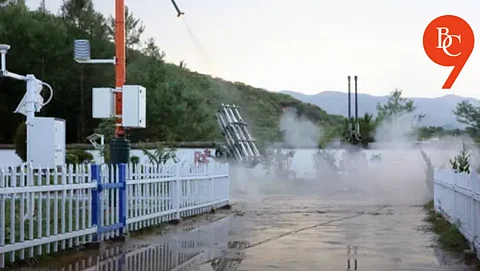

Delhi is set to make history by implementing its first-ever artificial rain operation, scheduled between July 4 and 11, 2025, in a bold attempt to tackle the city’s persistent air pollution crisis. The initiative, spearheaded by the Delhi Environment Department under Chief Minister Rekha Gupta, will use advanced cloud seeding technology to induce rainfall and help clear the city’s skies.
Artificial rain, or cloud seeding, involves dispersing substances into moisture-laden clouds to accelerate the formation of raindrops. For Delhi’s operation, IIT Kanpur has developed a special mixture containing silver iodide nanoparticles, iodised salt, and rock salt. This formulation will be released into the clouds using flare-based systems mounted on modified Cessna aircraft.
Each sortie will last about 90 minutes and cover nearly 100 square kilometres over low-security air zones in northwest and outer Delhi. The project, officially titled “Technology Demonstration and Evaluation of Cloud Seeding as an Alternative for Delhi NCR Pollution Mitigation,” will consist of five such sorties.
IIT Kanpur is responsible for the technical operations, including scientific modelling, flight planning, and operational logistics. The flight plan has been submitted to the India Meteorological Department (IMD) in Pune for technical coordination, and the Directorate General of Civil Aviation (DGCA) has been approached for necessary approvals and possible backup windows in case of unfavourable weather.
Delhi Environment Minister Manjinder Singh Sirsa emphasized that the operation will proceed only if weather conditions are suitable, with the IMD confirming that the period from July 4 to 11 is the most feasible window. If conditions remain unsuitable, alternative dates may be considered to ensure the success of the trial.
This artificial rain project is the first of its kind for Delhi and is regarded as a landmark step in urban pollution management. The city, often ranked among the most polluted in India, faces severe air quality challenges, especially during winter. The government hopes that induced rainfall will help settle airborne pollutants, providing immediate relief to residents and setting a precedent for future pollution control measures.
The estimated cost of the trial is around ₹3.21 crore, reflecting the government’s commitment to exploring innovative solutions for public health and environmental sustainability.
If successful, Delhi’s artificial rain initiative could serve as a model for other Indian cities grappling with air pollution. Officials and experts hope that measurable improvements in air quality will pave the way for broader adoption of cloud seeding and other technological interventions in urban environments.
